The Life of Viola: What One Turtle Can Teach Us About Saving a Species
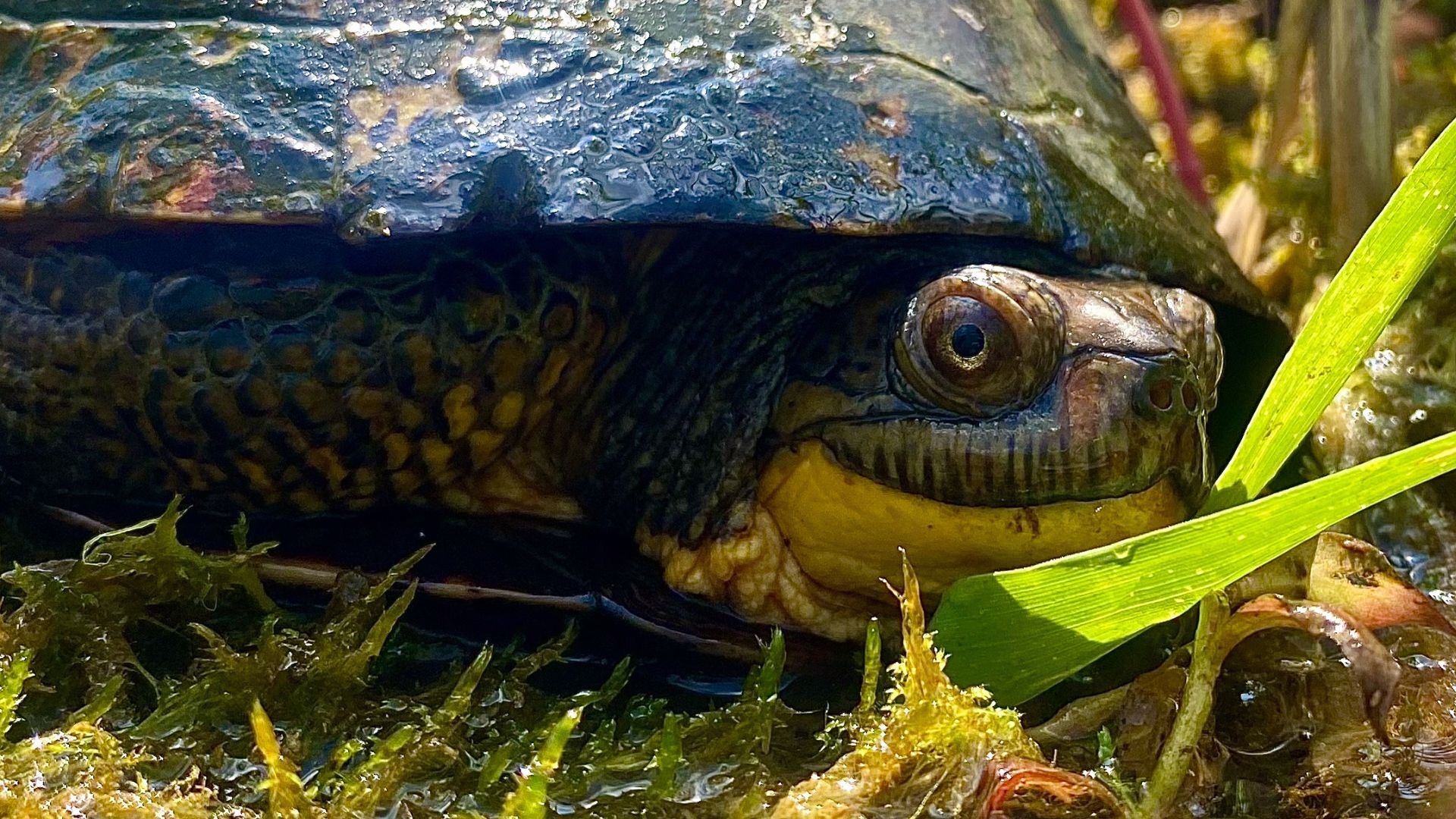
- Author
- Callie Klatt Golba, Ph.D., Curator of Turtle Conservation
- Date
- July 14, 2025
One of the hardest parts of wildlife biology is getting to know your research animals and then losing them. This is a tribute to a very special Blanding’s turtle I’ve known for 10 years who recently passed away. Her story reflects some of the joys and heartbreaks of this work, and how deeply we, as scientists, appreciate the animals that help us learn how to conserve nature.
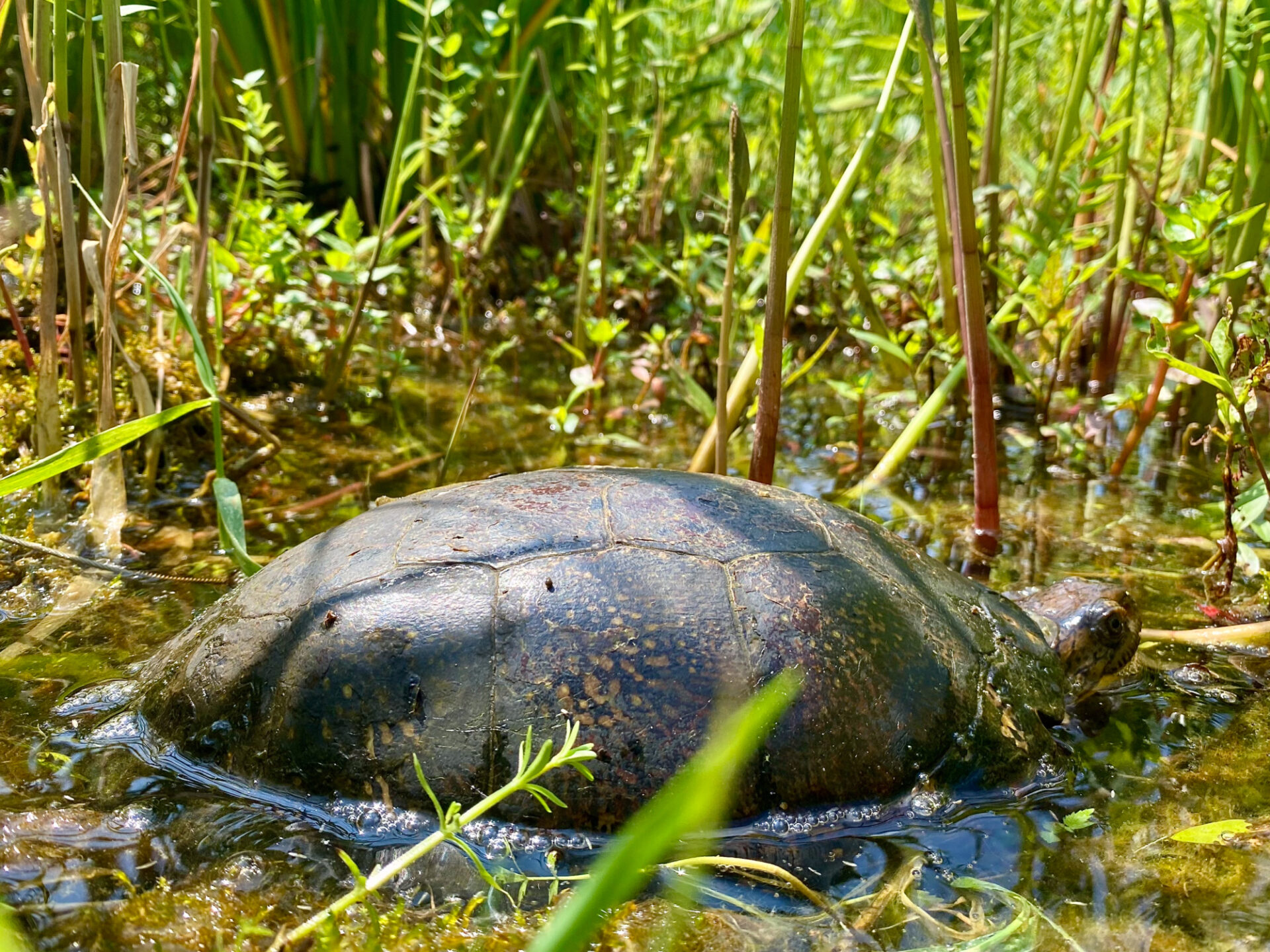
Viola relaxing in the water
Blanding’s turtles are semi-aquatic freshwater turtles that live in large, mosaic-like landscapes of wetlands, prairies, woodlands, that make up some of the most important habitats in Illinois. Because of this, they serve as an umbrella species, benefiting many other native plants and animals. In 1999, they were listed as threatened in Illinois, and by 2009, they were upgraded to endangered as research revealed dwindling, isolated populations facing numerous threats.
One key project that helped determine this endangered status was a partnership between the Illinois Natural History Survey (INHS) and the Lake County Forest Preserve District (LCFPD). In 2004, they launched a large effort to determine where Blanding’s turtles still occurred and assess the health of those populations. One site stood out: a population with many adults, but signs of decline without intervention. This marked the beginning of long-term monitoring at the site… and the sixth turtle captured there was Viola.
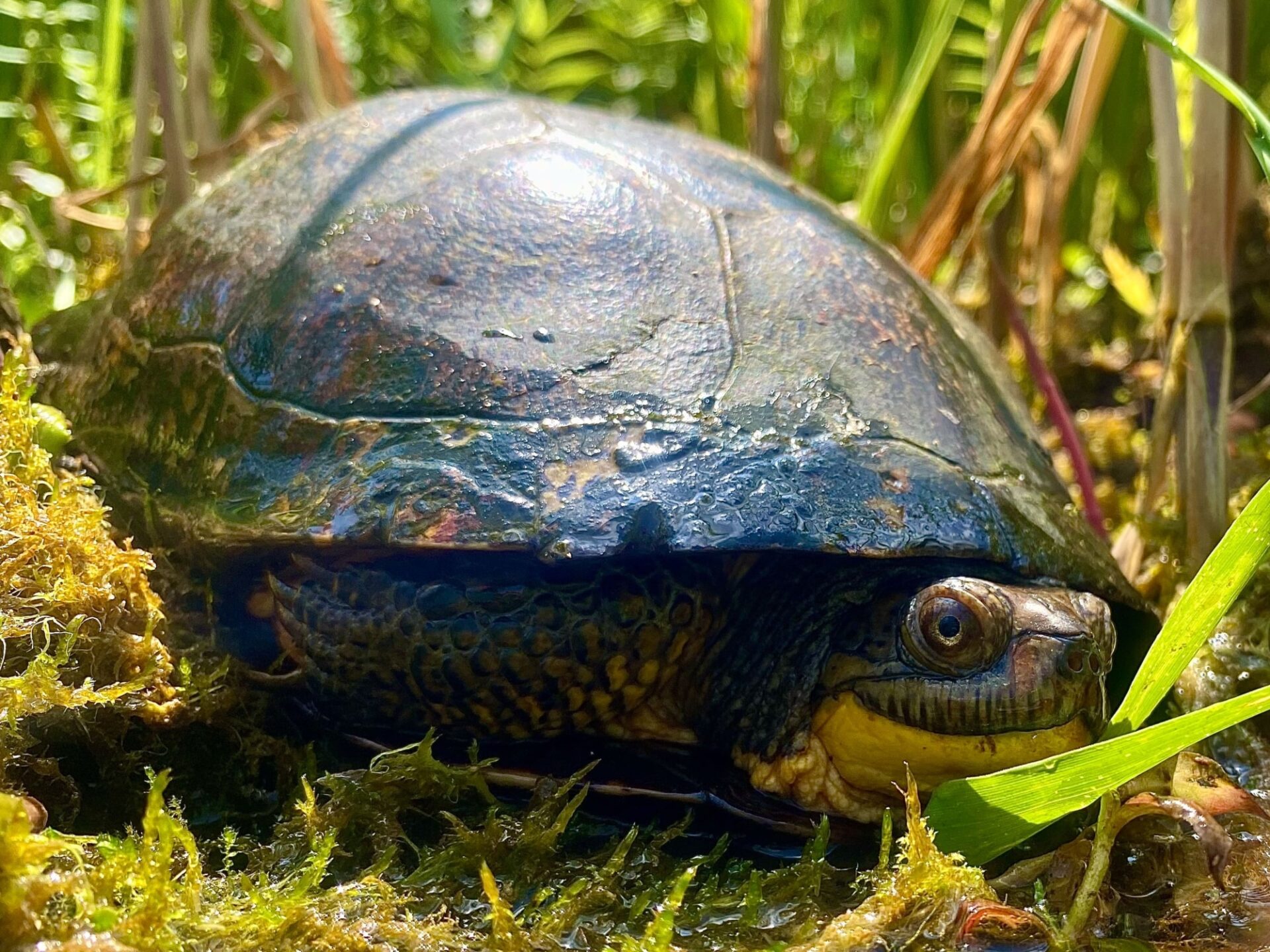
Shy Viola
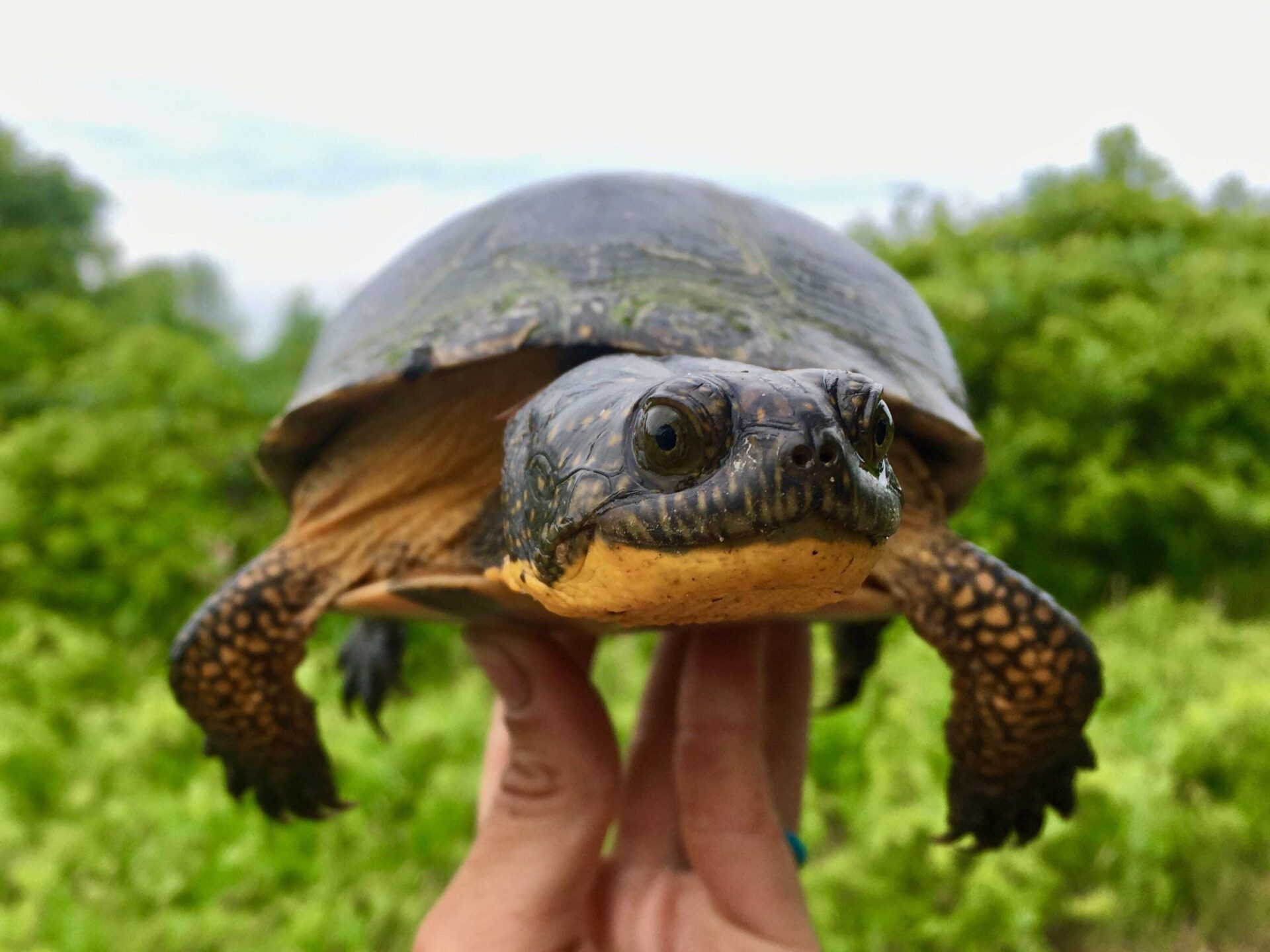
One of Viola's headstarts, the Project's first headstart to reach reproductive maturity
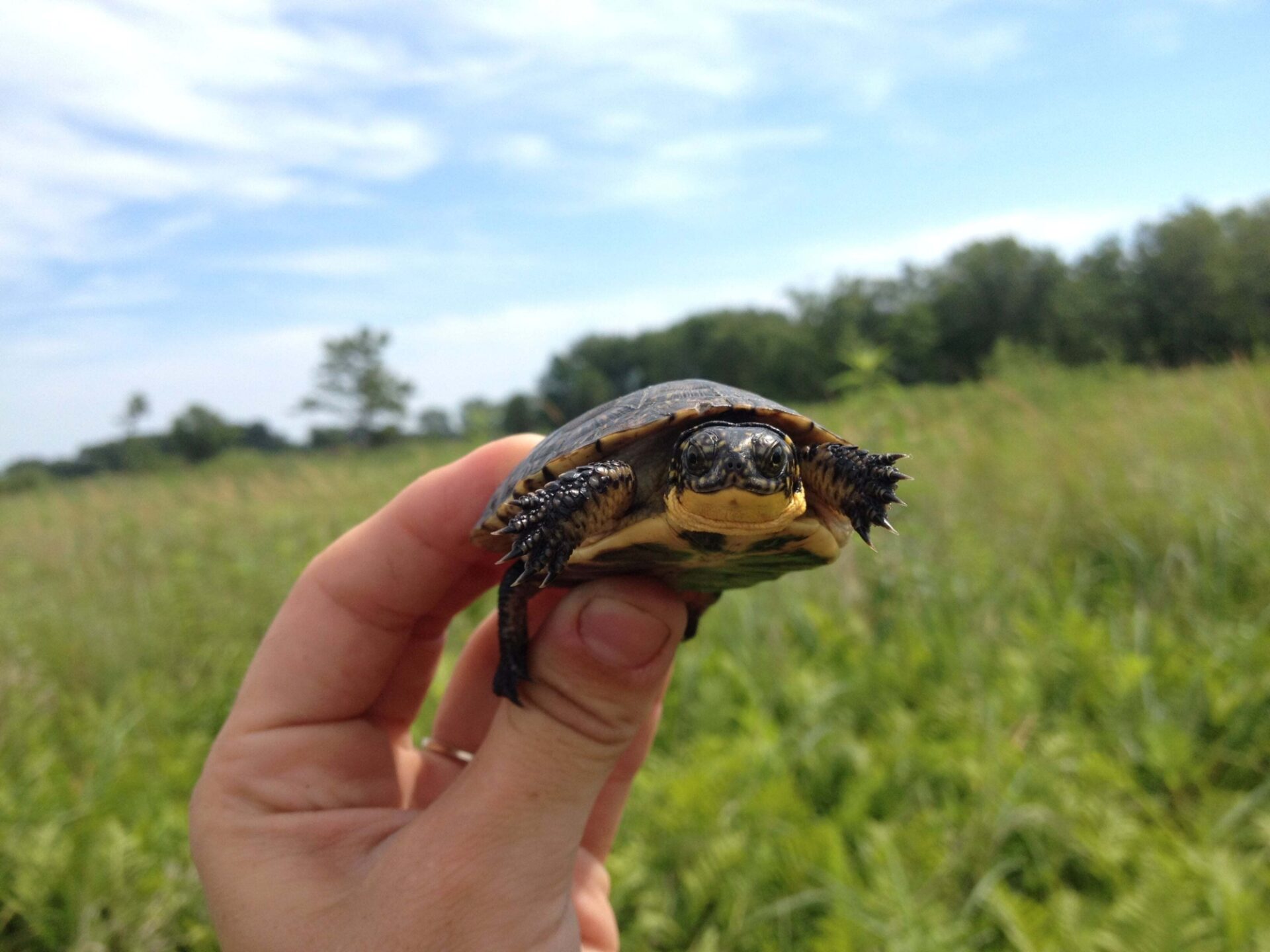
Releasing of one of Viola's headstarts
At over 1,000 grams, Viola was already a large adult female. She was likely between 25 and 40 years old, and probably on the older side due to her size. From 2006 to 2008, Viola was fitted with a radio transmitter so her movements could be closely tracked, helping us understand habitat use and nesting sites to guide management. Data from Viola helped Dr. Andy Kuhns (INHS) and Gary Glowacki (LCFPD) create a management plan aimed at recovering her population to a self-sustaining level.
In 2011, Viola received a transmitter again, this time to contribute to a new headstarting program. Headstarting is a common conservation strategy where eggs from wild females are collected, and the hatchlings raised in captivity through their most vulnerable first year. Viola was one of the first egg donors in this program. Five of her headstarted offspring have since been documented as reproductive adult females, continuing her legacy.
I joined the project in 2015 as a seasonal turtle technician and quickly became enamored with Viola’s shy personality despite her size. In August of this year, we found only her transmitter buried in muck and feared the worst. Heartbroken but still hopeful, we made Viola a “bonus turtle” during the 2016 Blanding’s Bowl, our annual turtle-catching competition to boost trapping during peak season. Bonus turtles earn teams 60 extra points (often the difference between first and second place). During the event, Gary Glowacki spotted a yellow chin poking from a far-off wetland. He made a heroic leap and sure enough, it was Viola.
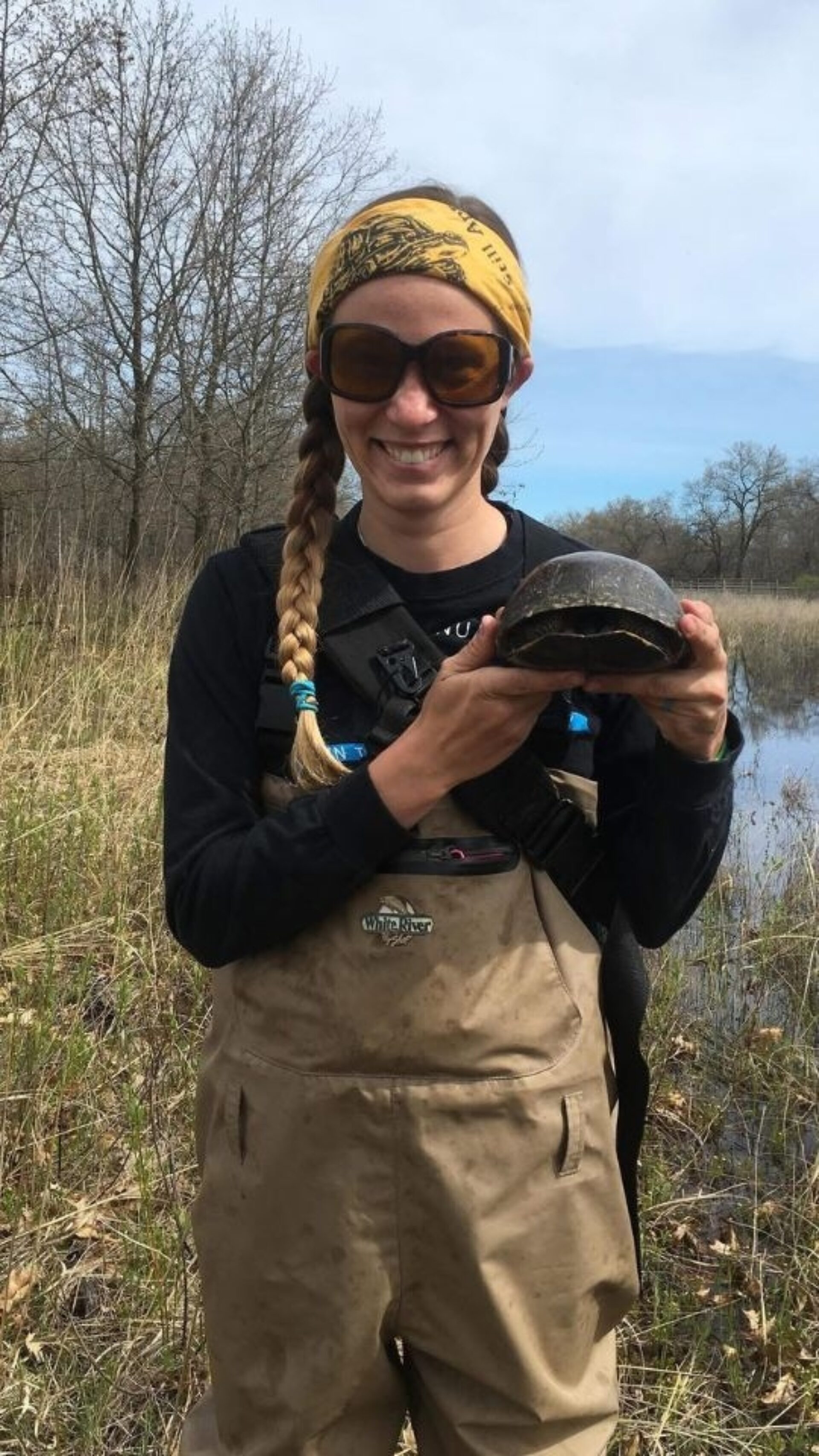
Dr. Callie meeting Viola in 2015
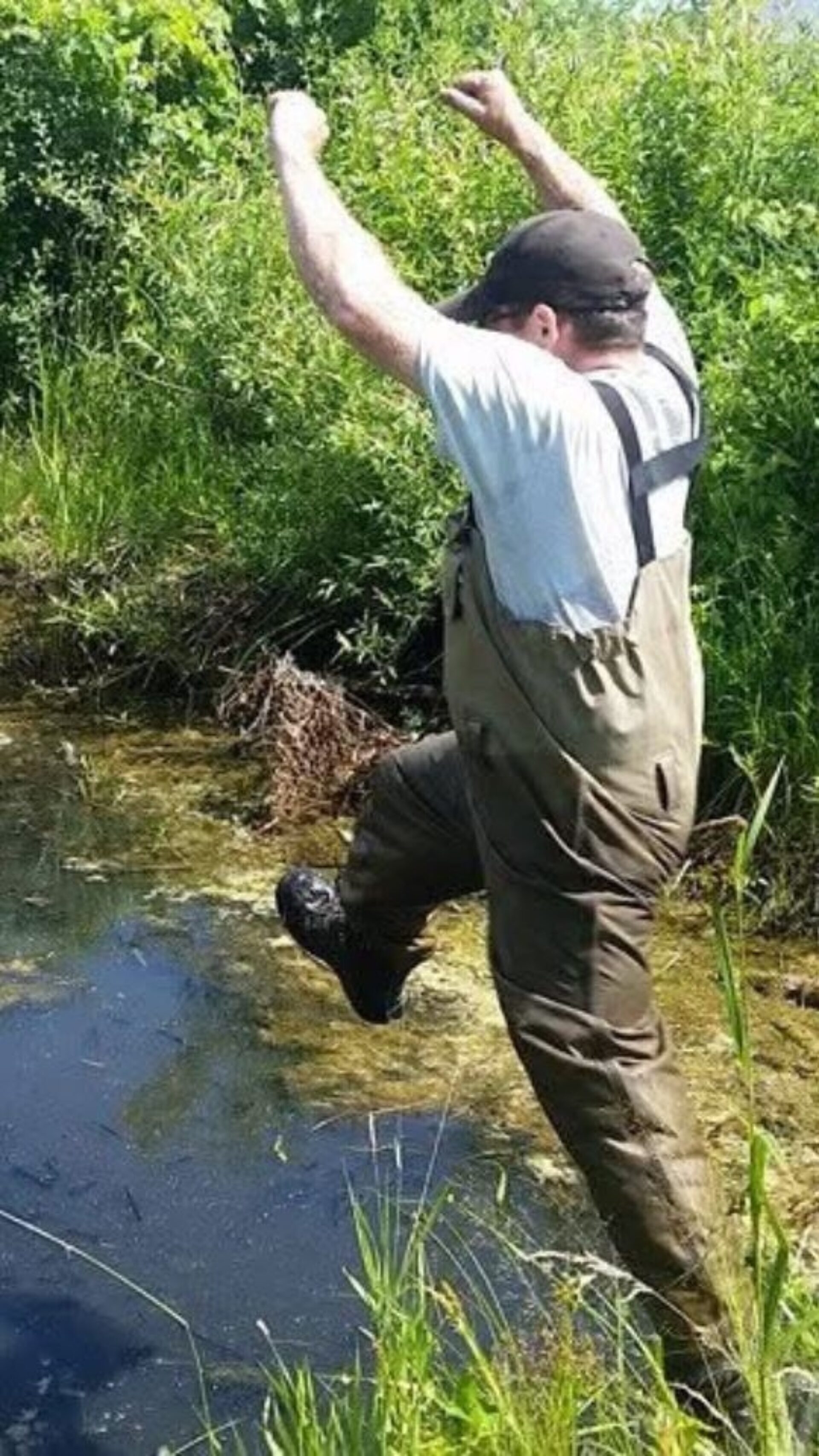
Gary Glowacki leaping to catch Viola during the 2016 Blanding's Bowl
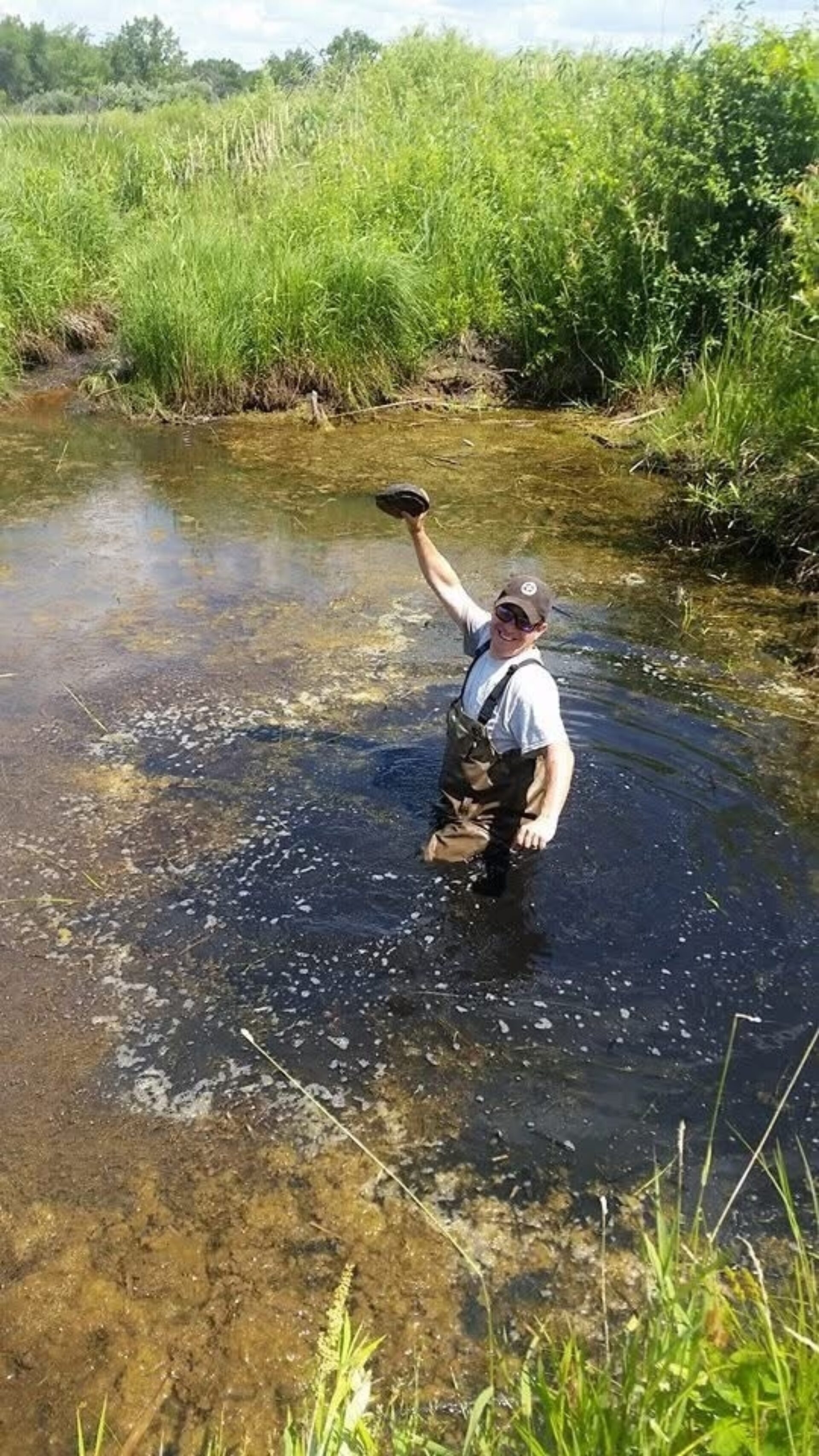
Gary Glowacki holding Viola during the 2016 Blanding's Bowl
Over two decades, we collected more than 557 location points for Viola. She reliably spent most of her year in the same beautifully restored wetland, then traveled about a mile each summer to nest. She was the largest and heaviest female ever recorded in this population, and she laid the most eggs (24 in one year, far above the species’ average of 13). Viola contributed over 129 headstarted turtles to the recovery effort.
Viola’s life continues to inform conservation well beyond Lake County. Her data has contributed to over 15 scientific publications on Blanding’s turtle demography (including adult survival, clutch size, growth, movement, habitat use, and health), informing best practices across the species’ range.
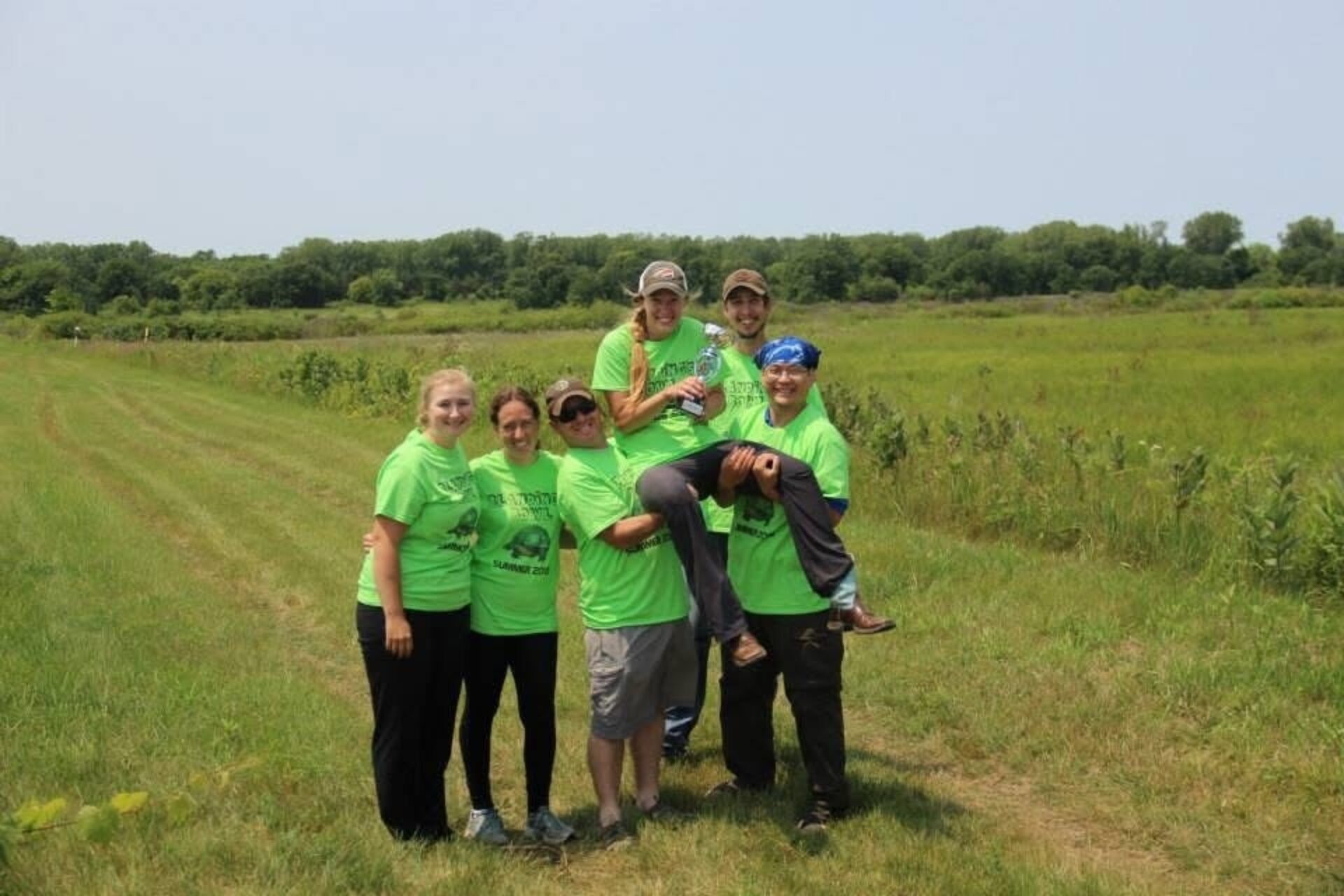
2015 Turtle Crew
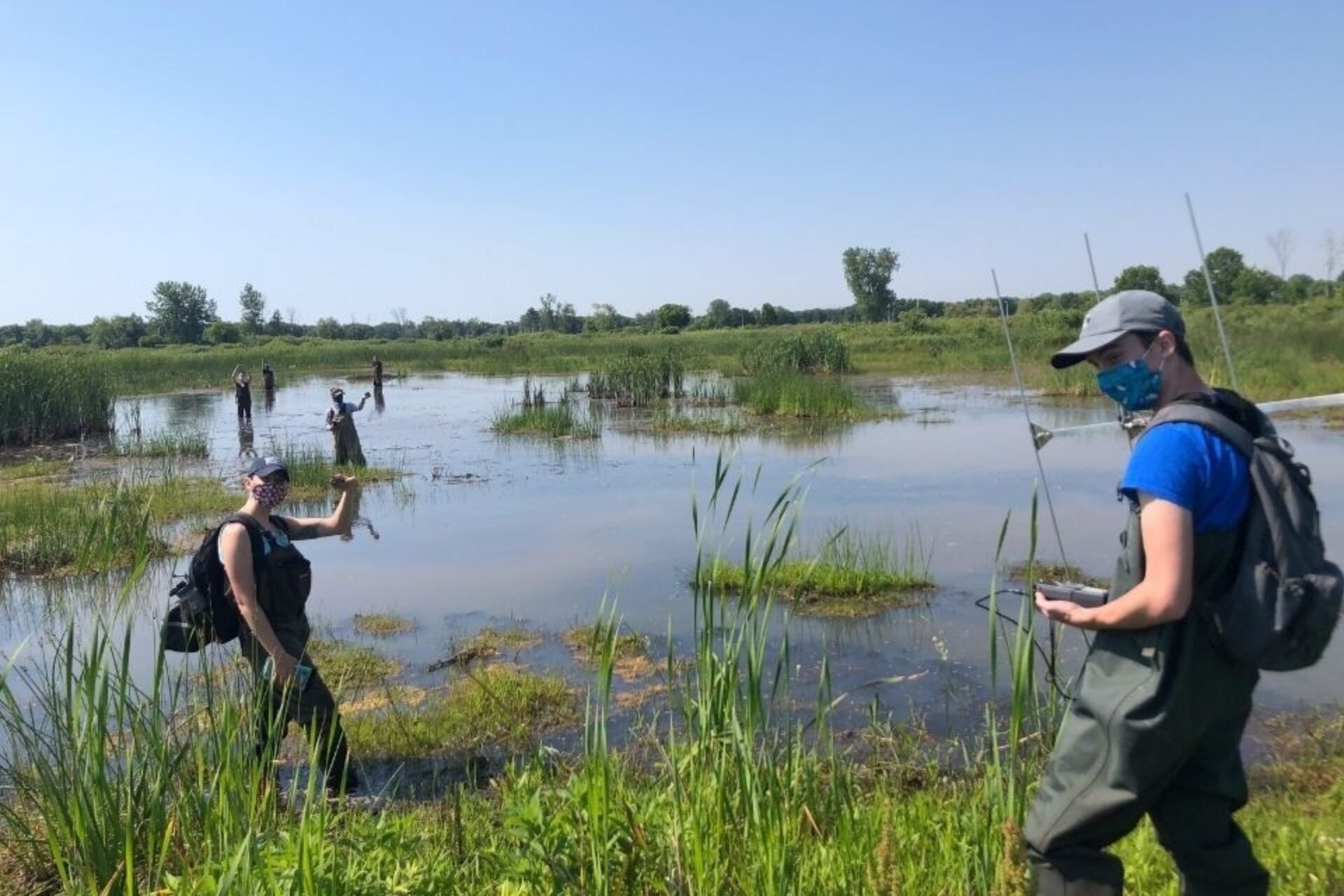
2020 Turtle Crew
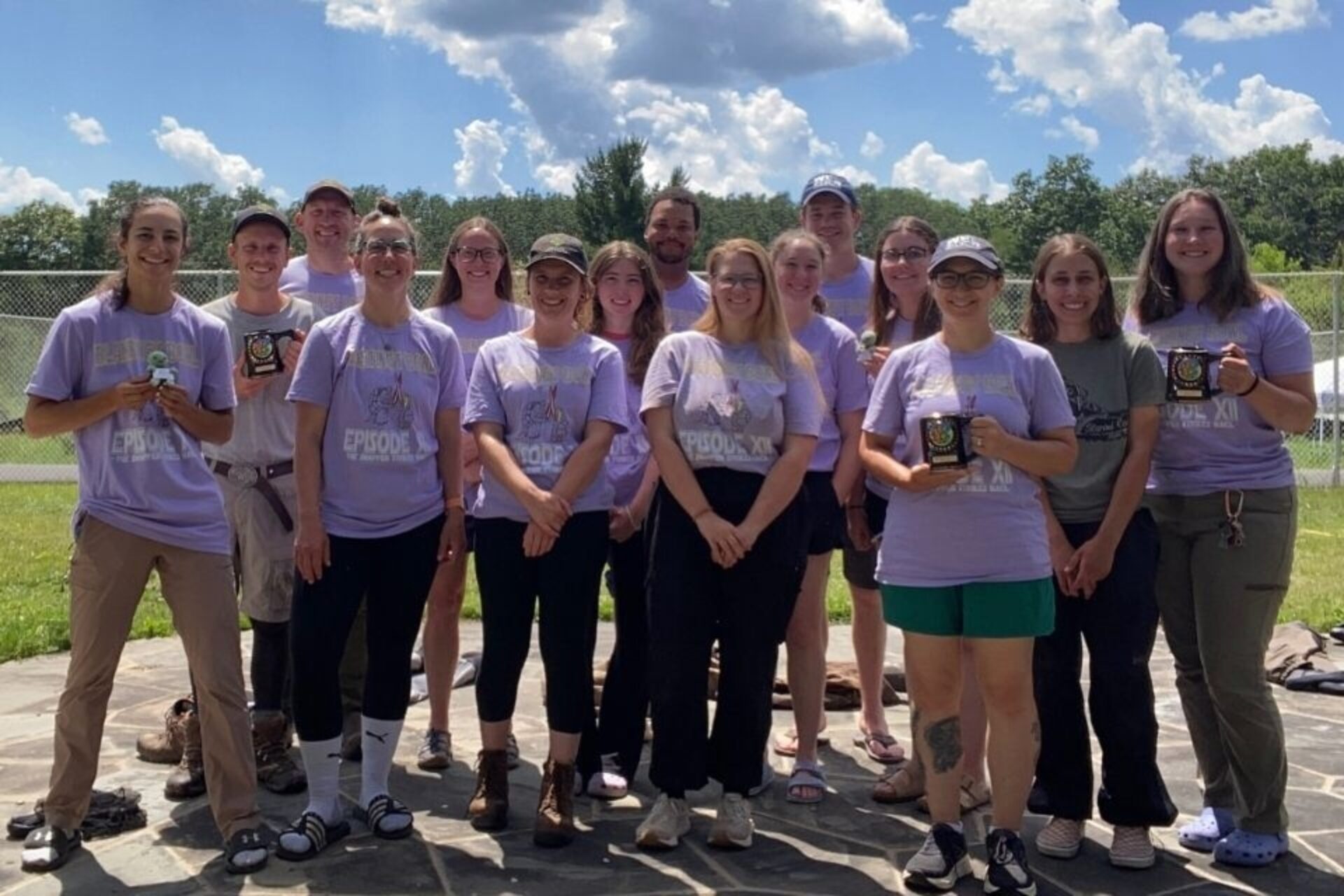
2025 Turtle Crew
This year, as a new generation of budding scientists was falling in love with Viola, as so many of us have, her behavior began to change. She stopped developing eggs and was barely moving. In early July, we found her barely alive. We tried everything we could, but she was already on her way to turtle heaven.
At at least 45 years old, Viola died, still on the younger end for this species. The oldest known adult female Blanding’s turtle in Michigan turned 95 this year. Like many turtle species, Blanding’s turtles don’t begin reproducing until around 16 to 20 years of age, then lay eggs annually for the rest of their lives. That’s why adult females are especially critical for population recovery, and why Viola’s loss will be felt deeply.
When INHS first captured her in 2004, they had a tradition of naming turtles after things they loved to make fieldwork more fun, and easier to remember than PIT tag codes like 4307556F4A. Viola was named after a folk country song by Graham Lindsey.
In science, we’re often told not to anthropomorphize our study animals, to keep our data objective. Even Jane Goodall faced criticism for giving her chimpanzees names and personalities. But she stood by it, and today, research continues to show that animals do have personalities. Empathy, rather than biasing us, can deepen our understanding and commitment to conservation.
Finding connections with our study animals fuels the passion that drives conservation. Viola taught generations of biologists, technicians, and wildlife vets, and every single one of us has a Viola story. Thank you, Viola, for all you’ve given to science, to conservation, and to the many lives you touched. You will be missed, but never forgotten.
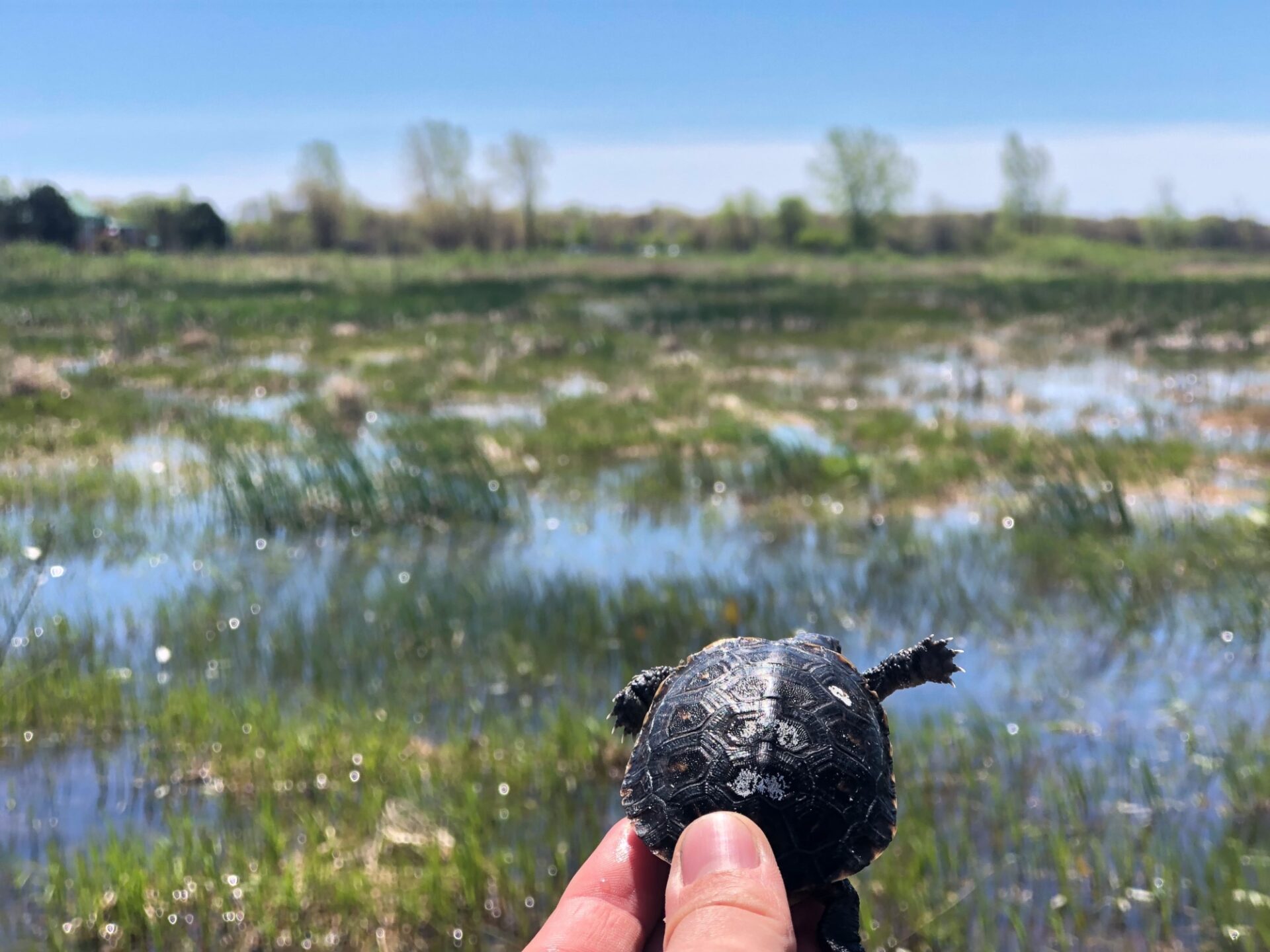
One of Viola's headstarts being released